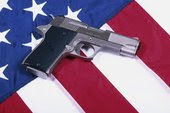- Actual cases that clearly illustrate important self-defense concepts.
- Clear explanations of the crucial terminology used in these cases.
- Charts that illustrate the differences in state's laws regarding use of deadly force
- Factors that lead to arrests & convictions during self-defense shootings.
- Practical ways to help avoid conflicts that can escalate into violent encounters.
- How to properly "step-up" necessary force levels the way cops are trained to do.
John R. Lott, Jr., is a senior research scholar in the School of Law at Yale University. In this definitive work he provides overwhelming statistical evidence that:
- 98% of the time, simply legally brandishing a weapon will deter an attack.
- The probability of serious injury from an attack on a woman is 2.5 times greater if she offers no resistance vs. when resisting with a gun.
- Felons are much more worried about running into armed victims than running into police officers.
- States experiencing the greatest reductions in crime are the ones with the fastest growing percentages of gun ownership. For every 1% increase in gun ownership, violent crime is reduced by 4.1%.
- There is consistent strong evidence of the deterrent impact on violent crime by issuing concealed firearm permits. This is Mike & Rob's primary motivation for teaching these Utah Concealed Carry Permit classes.
- Issuing CFP permits is the most cost-effective means of reducing crime, of any other government program, ever analyzed by economists.
Attorney James D. "Mitch" Vilos, shares his knowledge gained during years of representing gun owners throughout the country. His plain talk summaries and entertaining humor, make Utah Gun Law, Pancho's Wisdom an enjoyable and valuable resource.
Mitch teaches how to avoid the risk of losing our rights because of some obscure gun law. This is the 3rd Edition of this important work.
Mitch states that the right to bear arms is Homeland Security, and is extremely important to all free people for at least three reasons:
1. It is a vital check on government tyranny,
2. It is an important deterrent to foreign invasion,
3. It allows free citizens to defend themselves from violent criminal attack.












